|
|
Post by rsmith7 on Dec 8, 2011 19:13:51 GMT 1
Ah, bunch of soft, southern, shandy drinking, poofs. Roof blown off shed 8am. Roof replaced 3.30pm. Force 12 imminent. Pull the cork on nice bottle red and relax.  |
|
|
|
Post by principled on Dec 24, 2011 11:08:24 GMT 1
Well, the snow isn't roaring in central Canada. No snow when there should be metres of the stuff. +3 Deg when it should be 20 below. And here, well it's almost BBQ time,
Merry (snowless) Xmas everybody.
P
|
|
|
|
Post by marchesarosa on Dec 24, 2011 11:26:24 GMT 1
Yes, very mild here, too, principled.
So I guess Piers Corbyn was wrong ( except for the hurricane and snow storm which hit Scotland.)
|
|
|
|
Post by rsmith7 on Dec 25, 2011 19:14:31 GMT 1
Yes, very mild here, too, principled. So I guess Piers Corbyn was wrong ( except for the hurricane and snow storm which hit Scotland.) Yeah, thanks for that, Piers. |
|
|
|
Post by marchesarosa on Jan 21, 2012 19:12:13 GMT 1
Guest Post By Madhav Khandekar former research scientist from Environment Canada and IPCC reviewer 2007 “ Winter 2011-2012: Another Cold & Snowier Winter For India”January 20, 2012 The winter season of 2011-12 has been significantly colder since mid- December and as of mid-January, many regions in north and central India are witnessing mean temperatures about 5 to 10 C below normal. Even in parts of south-central India mean temperatures are significantly below normal. The city of Bangalore ( India’s high-tech IT centre, latitude ~13N) is witnessing its coldest January so far. A couple of weeks ago, the minimum temperature in New Delhi, India’s Capital (population ~ 16 million ) recorded a minimum temperature of -5C! The maximum has been hovering at just about 18C to 20C for the past week or so. In the foothills region of the Himalayas (KashmirValleyand vicinity) the mean temperature has been just 3-5C, while some high-elevation locales reported a minimum at -18C and below. In the last two days (January 17-18) Kashmir valley received over two feet of snow and the main transportation routes have been blocked due to heavy snow amounts along the winding roads through numerous hills and mountains. So far over 200 people are reported to have been dead due to long exposure to low temperatures. It must be noted here that most houses in northern India, including the Kashmi region DO NOT have any kind of heating system. Further most houses are built for summer weather with open windows (with very little insulation) so most houses remain cold through day and night. Many older houses in northern India have a small (electric) room heater but its usage can be expensive if the cold spell continues for long. Long cold spells can be stressful, especially for older people. Most people keep themselves warm by wearing extra layers of clothing at nighttime. The current cold spell is affecting perhaps over 500 Million people living in north & central India. The past few winters have been significantly colder than normal for most of north and central India. During the long cold spell in last January (2011) and also the previous January (2010), several hundred people died of long exposure to low temperatures. The local TV footage showed many people, wrapped in blankets and shawls, and huddled along roadside camp-fires consisting of dry leaves, wood-pieces, twigs or even old pieces of tires, and other junk. Such roadside campfires add to the smog problem and affects human health. Are winters in India and in some tropical latitudes (below 25-30N) becoming colder in South Asia? The exceptionally cold winter of 2002/03 in Northern Hemisphere brought a month long cold spell in Bangladesh and Vietnam where several hundred people died of long exposure to colder weather. In theKashmir Valley and vicinity, snow accumulation has increased since the new millennium. Elsewhere, snow has been reported in Tangier (Morocco), northern Algeria and parts of the Middle East in the last five years. There is an urgent need to analyze whether winters have really become colder in tropical and sub-tropical regions of the Northern Hemisphere in recent years, The IPCC science appears to be obsessed with documenting warmer winters in Europe and North America, while paying very little attention to how the real climate is impacting Asia and Africa. A long cold spell, as being experienced by people in India at present, can be more stressful than a long summer, with temperature 40C or above. During summer, most people in northern & western India (States of Gujarat & Rajasthan) sleep outside on roof terraces or balconies. A few hours in the afternoon can be uncomfortable, but a small fan or an occasional cool breeze can (and does) help. A long cold spell in winter provides NO such relief! Acknowledgements: Mr Barun Mitra (Liberty Institute New Delhi) provided some material ( based on his personal lifestyle at present) for this commentary. I am grateful to Roger Pielke sr for encouraging me to write on his website. My winter visits to India and to my former “home-town” Pune in the last seven years has motivated me to write this commentary. pielkeclimatesci.wordpress.com/2012/01/20/guest-post-by-madhav-khandekar-winter-2011-2012-another-cold-snowier-winter-for-india/ |
|
|
|
Post by marchesarosa on Feb 6, 2012 16:25:00 GMT 1
Tragic winter weather in Europe doesn’t fit the Mannian narrativewattsupwiththat.com/2012/02/05/tragic-winter-weather-in-europe-doesnt-fit-the-mannian-narrative/#more-56014climate.rutgers.edu/snowcover/chart_daily.php?ui_year=2012&ui_day=35&ui_set=0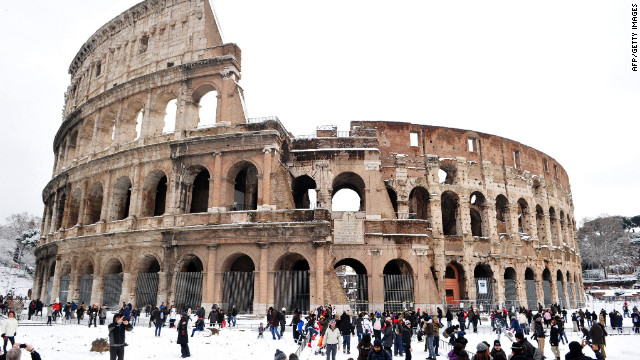 People stand in snow in front of the Colosseum on Saturday, February 4, in Rome. 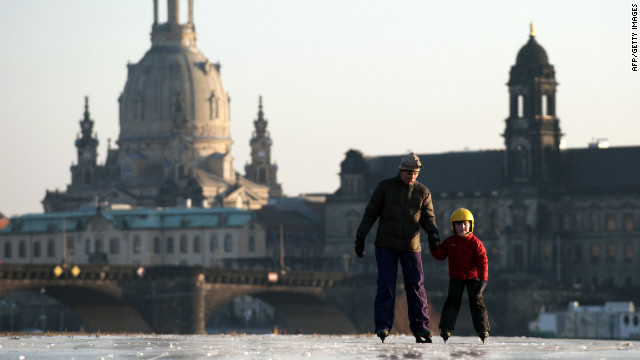 A boy and his mother skate on the partly frozen Elbe River as the skyline of the eastern German city of Dresden is silhouetted in the background on Thursday, February 2. A cold snap kept Europe in its icy grip, pushing the death toll past 150 as countries from Italy to Ukraine struggled to cope with temperatures that reached record lows in some places. 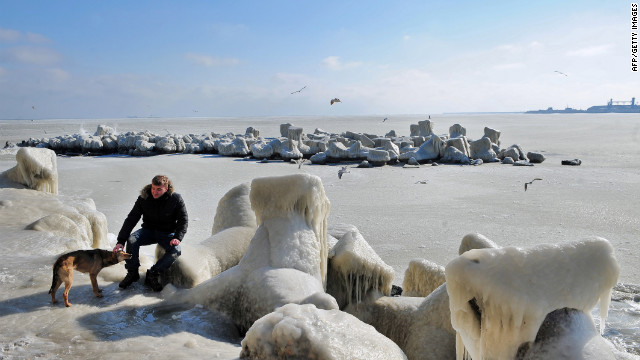 A man pets a dog next to frozen sea waters in Constanta, Romania, on Wednesday, February 1. Temperatures plunged to -34 degrees Celsius (-29 degrees Fahrenheit) in central Romania, where eight people died due to cold-related causes, according to local media. 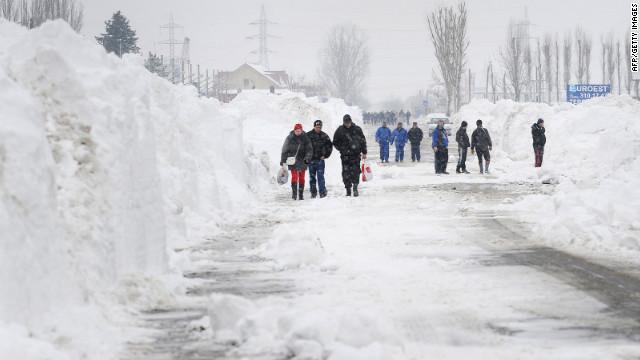 Freshly plowed snow frames a road in Bucharest, Romania, on Friday, January 27. 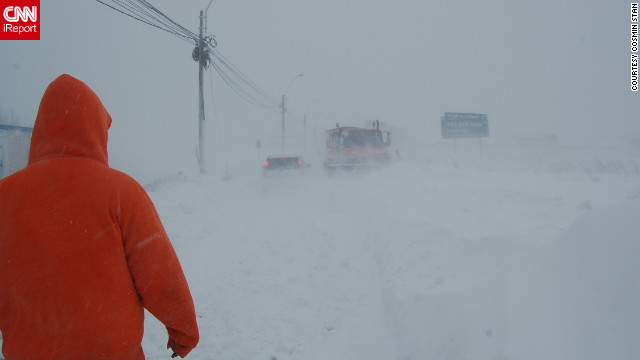 iReporter Cosmin Stan sent in this photo from Bucharest, Romania, on Thursday, January 26. “The problem was not the quantity of the snow, but the strong winds,” he told CNN. Europe deep freeze reaches North Africa as it claims more than 300 lives The bitterly cold weather that has brought much of Europe to a standstill claimed more victims as the blanket of snow reached as far south as North Africa. Freezing temperatures claimed more victims in Ukraine, Poland, France and Italy. French authorities on Sunday found the body of a homeless man who had frozen to death, bringing to at least 306 the number of cold-related deaths reported across the continent. www.telegraph.co.uk/topics/weather/9063284/Europe-deep-freeze-reaches-North-Africa-as-it-claims-more-than-300-lives.html
|
|
|
|
Post by marchesarosa on Feb 10, 2012 20:08:39 GMT 1
From "Silver Ralph" on WUWT re the latest cold snap.
"In N. Europe we have now had three bitterly cold winters, and three disappointing summers. In my 45 years of noting winter weather, I have seen nothing remotely like it (I just missed the ’63 winter).
If I were a Charles Dickens-style author, I would be placing my characters in snowbound streets and ice covered canals, and writing about a Little Ice Age. And anyone claiming otherwise, like a climatologist saying that the last three years were the warmest on record, would be laughed out of polite society, especially as the Rhine is frozen over for the first time in nearly 50 years.
What a European farmer, industrialist, transport manager, airport manager or, indeed, barge captain on the Rhine wants to know, is WHAT WEATHER CAN I EXPECT OVER THE NEXT FEW YEARS. For climatologists at the Met Office to claim that it will be 6 degrees warmer, based upon a few hotspots in the tropics or the Antarctic Peninsula is not only irrelevant cant, it is positively dangerous.
People are stuck at airports and on motorways, people cannot get to work, food is not being delivered, and hundreds of people are dying all over eastern Europe, because everyone was promised warmer temperatures, and no planning was made for colder weather. And still we are being told that these are indeed the warmest years on record ! These climatologists are not only dangerous, they have blood on their hands."
|
|
|
|
Post by marchesarosa on Feb 28, 2012 17:35:18 GMT 1
From Warwick Hughes blog www.warwickhughes.com/blog/?p=1380NOAA satellites speak again – coldest week for a decade – at 14,000 ftThis global “cold snap” looks more significant than the one we highlighted last month. |
|
|
|
Post by nickrr on Feb 28, 2012 18:12:08 GMT 1
|
|
|
|
Post by marchesarosa on Feb 29, 2012 12:15:38 GMT 1
Bu bu but ... the summer Arctic sea ice has been melting forever (well, since 1979) nick! Why the sudden change NOW to colder Northern Hemisphere winters? This was not predicted by the IPCC models. The UK was promised "no more snow" by David Viner, of the UEA, himself. www.independent.co.uk/environment/snowfalls-are-now-just-a-thing-of-the-past-724017.html This recent change has taken them by surprise. Have you considered that the reduction in Arctic sea ice (for whatever reason) may produce its own negative feedback which involves more NH snow coverage and consequently a greater (cooling) albedo? This speaks to homeostasis rather than a positive feedback tipping point and runaway warming. And, nick, I wouldn't take Richard Black's spin on anything. He's a political propagandist masquerading as a science correspondent. Do you know the difference? P.S. The Liu, Curry et al paper in question, which posits a (tenuous) link between melting arctic autumn sea ice and NH winter snowfall, looks at data only from 2007 whereas satellite data is available from 1979. What's that all about, do you think, nick?? Willis Eschenbach examined the data for Arctic Sea Ice and NH snow extent for the whole period from 1979 and concludes It is clear that in general the arctic ice area has been decreasing for twenty years or so. It is equally clear that the northern hemisphere snowfall has not been increasing for the last twenty years. Finally, it is clear that there is no statistical relationship between decreased ice and increased snow.wattsupwiththat.com/2012/03/06/i-used-to-be-snow-white/#more-58431 |
|
|
|
Post by marchesarosa on Feb 29, 2012 12:34:59 GMT 1
David Brewer comments on the GLOBAL "cold snap" revealed by the satellite data illustrated on Warwick Hughes blog www.warwickhughes.com/blog/?p=1380"at least it’s globally averaged temperature, not some freak individual event in one part of the world, such as the warmers often trot out as evidence (Aussie droughts, French heat waves, individual hurricanes, low Arctic sea ice etc. etc.) And these recent 10-year record global cold events also reflect a clear stagnation of the overall temperature trend over the past 10-15 years, when according to IPCC models there should have been a warming of around a quarter of a degree.
The predictions of doom are the only things turning out to be “worse than we previously thought”. How much longer must temperatures stay flat before we get some admissions that the alarm has been overdone? |
|
|
|
Post by marchesarosa on Feb 29, 2012 14:51:31 GMT 1
Perhaps nick, or alternatively, someone knowledgeable, can parse this for me?
“Global warming is making the world colder”
Because this seems to be what the alarmists are saying at the moment, led by cheerleaders like Richard Black.
|
|
|
|
Post by StuartG on Feb 29, 2012 14:56:35 GMT 1
|
|
|
|
Post by marchesarosa on Feb 29, 2012 15:05:09 GMT 1
Sooo very nice for someone to acknowledge the existence of the other half of the world, stu!
Borealcentrism, along with anthropocentrism, is the bane of naive climate alarmists.
|
|
|
|
Post by StuartG on Feb 29, 2012 15:06:22 GMT 1
|
|